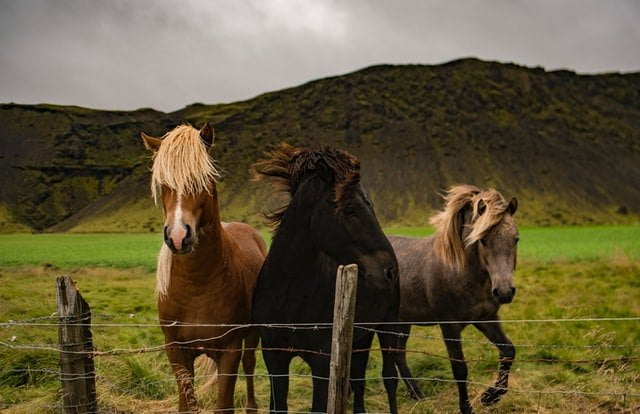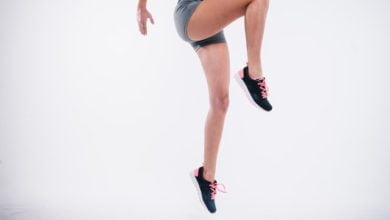What are the uses of Friesian horses?

What are the uses of Friesian horses?
Horses come in many shapes and sizes, but few are as majestic or have the same irresistible presence as the Friesian. With an unmistakable black coat and a flowing mane, this horse is as impressive as it is versatile, and as a result, it is a breed with many uses.
If you are considering buying a Friesian and wondering what they excel in or even if you are just interested in learning more about this beautiful animal, here we give you all the details you need as we answer the question, What are Friesian horses used for?
A little about Friesian horses
Before we talk about the various uses of the Friesian horse, let’s start by saying a few words about the breed and where it came from.
The Friesian is a breed of Dutch horse, more specifically from the North Friesland region.
The ancestors of these horses are known from as long ago as Roman times, and during the Middle Ages, they became famous for war. Later, the faster, the lighter horses became the better for battle, the blood of the Andalusian horse was added to the breed.
Later, they were used in agricultural work, but with the development of technology and horses were no longer needed for this, they lost their luck and, at some point, came close to extinction.
Fortunately, they have been brought back from the brink, and now there is a healthy population – although the genetic pool is still relatively small, which causes some problems in this breed.
Appearance and mood
Modern Friesians are known for their shiny black coats, long legs and tail and feathers on their legs – although they can sometimes be found in other colors as well. For registration, no white markings are allowed other than a small white “star” on the head.
Stallions typically stand at 14.2-17 hands (58-68 inches, 147-173 cm), have a muscular build, strong pose, arched neck, and relatively short and strong legs.
They are calm, dependable and friendly in disposition. They are considered a small draft horse and are a “warm-blooded” breed due to the presence of both warm-blooded and cold-blooded in their lineage.
At present there are two types of Friesian horses. One is the more traditional type, known as “Baroque”. It is larger than the “modern” or “sportsman” Friesian, and is a slightly lighter and more slender version.
The Friesian is docile, intelligent, easy to train and eager to please, which makes them a very versatile animal, so now let’s look at some of the many uses they had, past and present.
1. Horses
Although it is fair to say that this is not something that is used today, the Friesians originally made their name as war horses.
Back in the days when horses carried knights in their armor into battle, the Friesians were prized carriers of many of their characteristics.
First, they were huge and strong enough to hold a heavy knight in full combat gear, and their remarkable stamina meant they wouldn’t tire quickly.
They are tough animals that do not fear easily, which would have been important once the chaos of battle broke out, but at the same time, they have a lively spirit, which would have made them fearsome animals to face in charge.
Of course, with the addition of blood from other breeds, the breed has changed a lot since those days – but some traits of those ancient war horses remain, making them also suitable for a host of other activities.
2. Agricultural work
With advances in technology in the war, horses were no longer needed, but the versatile Friesian found work elsewhere – on the farm.
The Friesian is considered a breed of draft horse, and although they are smaller than some of the largest draft horses, they make up for this with a willingness to work, ability to learn, and a desire to please.
With the mechanization of agricultural machinery, it has also become largely obsolete on the farm – but it is still sometimes used in agricultural work, and can also be found to make demonstrations of the kind of traditional farming techniques that once prevailed.
3. Trail ride
The Friesian is an excellent choice of trail horse for many of its most important characteristics.
When riding the trail, you never know what to expect, so you need a horse that doesn’t get freaked out easily.
If you suddenly come across someone’s dog, a wild animal or another runner in the woods, you don’t want a horse that will either move or turn and collide – and the Friesian’s calm demeanor in this kind of situation makes him a horse you can trust.
Friesians can also be accepting of horses or other animals easily – so if you are out with a group of other riders, their mounts are unlikely to cause any distress to your horse.
Finally, since many of the trails you will be riding can be uneven, you need an animal that is confident on foot that will not stumble, injure itself or throw you out of the saddle, and again, for this, the Friesian is an animal you can count on.
4. Taming
Friesian horses are not a traditional breed that usually appears at dressage events, but in recent years more of these horses have taken part – and in many cases, they have excelled.
Of the two types of Friesian horses, the modern Friesian is better suited for elite dressage competition, but the Baroque Friesian can also perform well in dressage competitions at a slightly lower level.
There are several reasons why Friesians do so well in dressage events, one of the most important being their personality.
They are easy to train and willing to learn – and are generally eager to please their owners. They are also patient enough to withstand the repetitions and constant training required to prepare them for competition, something that some other breeds simply cannot tolerate.
They also have a very convenient shape for taming. They have a strong presence and move gracefully and gracefully, they perform movements with balance, coordination and elegance.
They also have a smooth, regular gait, and with their “heighty” build, they naturally extend their long front legs in front of them while walking.
5. Competition and recreational driving
Many of the characteristics that make the Friesian suitable for dressage also make them the ideal horse for both competition and recreational driving, and it is now one of the most widespread uses for this breed of horse.
The Dutch Friesian horse-drawn carriage is called a sjee . It is a type of two-wheeled high-wheeled wagon that was a common mode of transportation in Holland before the advent of the modern automobile.
For this type of work, a strong, dependable horse with a calm disposition is required, a description that perfectly matches the unkempt Friesian.
Their strength and stamina combined with their trainability make them a good choice for towing other types of gigs as well, which is why they are commonly used for this in and out of competition.
6. Funeral horses
At one time, there were about 700 Friesian horses in London alone engaged in the funeral industry.
This was back in the Victorian era, and of course, nowadays, horses are not commonly used for this purpose anymore.
However, some people still prefer to use a horse-drawn carriage at funerals rather than motorized carriages, in this case, the Friesian is one of the most popular options.
7. Film and TV work
For many people other than horses, it’s probably where you’re most likely to see a Friesian horse on screen since they commonly work in the TV and film industries – and it’s easy to understand why.
As already mentioned, the Friesians have a noble, elegant and graceful appearance, which gives them a kind of strong presence that resonates well on the screen. They are a particularly popular choice in war or fantasy films for exactly this reason.
Because they are easy to train and eager to please, they are easy to get them to do whatever a manager requires, which is invaluable for people who understand the potential problems that can be encountered when working with animals.
Finally, its unbreakable appearance is highly desirable. Movie or TV sets can be lively places with lots of hustle and bustle, so having an animal that isn’t surprised or doesn’t settle down easily is extremely important.
Combined together, the characteristics of the Friesian make it almost the perfect breed for this use, and the long list of movies and TV shows featured in evidence of this fact.
Here are some notable examples of films that used Friesian horses:
- Clash of the Titans (1981)
- Ladyhawke (1985)
- The Mask of Zorro (1998) and The Legend of Zorro (2005)
- Time Machine (2002)
- Alexander (2004)
- The Chronicles of Narnia: The Lion, the Witch and the Wardrobe (2005)
- 300 (2007)
- The Hunger Games (2012) and The Hunger Games 2: Catching Fire (2013)
She has also appeared extensively in the TV series Game of Thrones (2011-2019) and can also be seen in countless others.
8. Circus Shows
Friesian horses are also a good choice as a circus horse for the same reasons. They are not afraid of large and noisy crowds, are easily trained and will operate reliably.
This is no longer of widespread use because circuses are less common than they used to be – but for circus performers, Friesian horses are a good breed to turn to.
9. Breeding
Another use of Friesian horses is to improve other breeds, and this has been done many times over the years.
An important example is the English Shire horse, which was developed by adding Friesian blood to existing local breeds.
Many other breeds have benefited from the addition of Friesian blood, including the American Morgan Horse to name just one.
Is there anything the Frisians are not good at?
With this list of suitable things for Friesian horses, you may be forgiven for thinking they are the perfect breed for just about anything. However, there is an old saying that says “horses for courses” – and there are some activities that the Frisians do not perform well.
For example, they are not horses bred for speed, which means they will never make better racehorses – although, when it comes to racing in the belt, they do quite well.
They are reasonably fast in short bursts, but cannot reach speeds to match the fastest breeds, nor can they maintain top speed for long.
They are also not good jumpers. They can be trained to jump, and they do it well enough in recreational jumping, but if you’re talking about competing against the best breeds, they just can’t come close.
What are the downsides of this breed?
If you are considering buying a Friesian horse, it can be a great option. However, there are a few things to keep in mind as they are not always the easiest animals to keep.
One thing to remember is that there is a lot of work to be taken care of, and it requires a lot of grooming.
Possessing a long mane and a long tail, they need constant combing, and the “feathers” on their legs – that long and silky attractive hair – also need to be taken care of.
One time-saving option is leg and tail braiding, but man, tail and feathers still need constant care to prevent possible skin infections and diseases.
The Friesian is also known to be prone to many congenital diseases, possibly due to the limited set of genes from which they arose. These may include:
- dwarfism
- Hydrocephalus (fluid buildup in the brain)
- Aortic rupture
- Huge esophagus (esophageal dilation)
- Equine polysaccharide storage myopathy
- digestive disorders
- Insect bite allergy
Other than that, they also have shorter life spans than many other horse breeds, living an average of 15-17 years instead of the usual 25-30 years.
It can also be expensive to buy, and its useful life increases the cost effectively, so this is not a horse to consider if you don’t have a relatively high investment budget.
A versatile horse that is understandably in high demand
So as we’ve seen, the Friesian is a very versatile breed of horse with a calm and friendly demeanor, a willingness to learn and much appreciated reliability. For these reasons, it is not surprising that this horse is a great choice for many types of activity.
Although there can be a lot of work to take care of, they can make reliable and lovable horse companions, whether you need a horse for trail riding, pulling a cart, dressage, for acting duty or much more However, the Friesian is a breed you will love and you can always count on.



